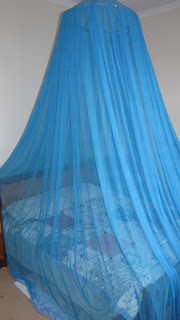 After 36 hours in transit, we are now back home in Rochester, New York. We flew first from Nairobi, Kenya, to Johannesburg, South Africa--a 4-hour flight. There was a seven-hour layover in Jo'burg, but it is a delightfully modern airport, with great tourist shops. We then flew 8 hrs to Dakar, Senegal, where we sat on the ground for 1 1/2 hours, while the plane was refueled and we all went through yet another security check (even though we never got off of the plane.) After that it was a 9-hr flight on to Washington D.C. From Washington it was only about an hour and a half flight to Rochester. Our son-in-law, Jeff Bishop, and daughter, Karen Pereira, greeted us at the airport. The other family members in Rochester were either working or were in school.
After 36 hours in transit, we are now back home in Rochester, New York. We flew first from Nairobi, Kenya, to Johannesburg, South Africa--a 4-hour flight. There was a seven-hour layover in Jo'burg, but it is a delightfully modern airport, with great tourist shops. We then flew 8 hrs to Dakar, Senegal, where we sat on the ground for 1 1/2 hours, while the plane was refueled and we all went through yet another security check (even though we never got off of the plane.) After that it was a 9-hr flight on to Washington D.C. From Washington it was only about an hour and a half flight to Rochester. Our son-in-law, Jeff Bishop, and daughter, Karen Pereira, greeted us at the airport. The other family members in Rochester were either working or were in school.We told you we would show some photos from our May 14 and 15 safari with family members. This took place at Maasai Mara, three days before we left the country. This is the best known game reserve in Kenya. Even though we had rain during part of the game drive on the 14th, we saw an amazing number of a great variety of animals. The Cape Buffalo is known to be the most aggressive and dangerous animal in Africa. It appears on this photo that he is telling us to go away.
This will be our last blog posting to Phil & Judy's African Adventure. We did have an amazing adventure BUT we are incredibly happy to be home!






 We saw many of these Thompson's gazelles near the Athi River campus, but could never get close enough for a good photo. In Maasai Mara, they are not so elusive. These are beautiful animals that run very fast. They are one of the smallest of the gazelles.
We saw many of these Thompson's gazelles near the Athi River campus, but could never get close enough for a good photo. In Maasai Mara, they are not so elusive. These are beautiful animals that run very fast. They are one of the smallest of the gazelles.










































